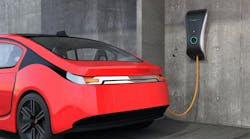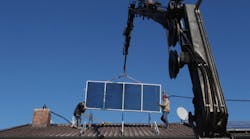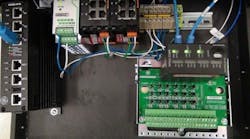The microgrid market is projected to grow rapidly over the next several years, with a growing number of systems under construction for campuses, communities, large industrial plants and data centers worldwide. The improving costs and advancing technologies of alternative power sources such as solar photovoltaics, wind, fuel cells, combined-heat-and-power, geothermal and microturbines are making microgrids an important way of integrating distributed power into the larger grid.
According to a report released last month by Navigant Research, worldwide revenue from microgrids will grow from $4.3 billion in 2013 to $19.9 billion in 2020. That’s Navigant’s base scenario. Under a more aggressive scenario, the firm estimated revenue could reach $36.2 billion annually by that point.
The opportunity has spurred many key manufacturers in the utility market to expand their offerings of technologies and systems to support and expand the possibilities of microgrids.
Siemens took a couple of steps over the past couple of weeks that suggest the German industrial conglomerate sees a bright future in microgrid offerings.
Siemens already had offerings to help electric utilities capture and manage grid system data. This week it introduced a platform for managing power at the microgrid scale, dubbed Spectrum Power 7 Microgrid Management System. The new platform extends Siemens’ advanced distribution management software (ADMS) for utilities down to the level of individual microgrids.
“Energy producers, consumers and distribution operators are all looking at adopting microgrids to increase energy resiliency, enable distributed resources and renewables, and optimize costs,” said Mike Carlson, president of Siemens Smart Grid North America. “This new solution gives utilities and end-users the ability to adopt a microgrid strategy to take advantage of integrating distributed power like renewables while managing traditional energy sources on their grid systems more efficiently.”
Siemens also announced a reseller agreement with Utilidata, Providence, R.I., so that Siemens can offer Utilidata’s voltage optimization software as part of its Energy Automation Solution portfolio. Utilidata gives Siemens a distributed, automated volt/VAR optimization technology platform. Utilidata has systems in use by utilities including American Electric Power and National Grid.
Voltage control allows utilities to deliver power within appropriate voltage limits so equipment along the grid can operate correctly and power losses are avoided, which saves energy, reduces peak demand, and improves the efficiency of the electric grid, Siemens said in a release.
“This partnership enhances the Siemens grid automation suite and will unlock new opportunities for our clients to utilize real-time grid information to realize efficiency and reliability benefits previously unavailable to them,” said Pat Wilkinson, head of Siemens Energy Automation.
Utilidata’s platform captures real-time data from the grid and gives utilities information needed to save energy, mitigate issues caused by distributed power systems and better detect grid anomalies.
The partnership with Siemens gives Utilidata greater reach worldwide. “With global market expertise, Siemens is known for pushing forward new approaches and innovative technologies to meet the energy challenges of today and tomorrow,” said Scott DePasquale, chairman and CEO of Utilidata. “We are pleased to have the opportunity to work together to bring voltage optimization software to Siemens customers and utilities worldwide.”
Siemens is far from alone in tackling the microgrid challenge, of course. General Electric, ABB and Schneider Electric are also among the competing grid players with products and platforms to integrate distributed generation in various ways. Their combined investment in research and development suggest microgrids and distributed generation systems will be a prominent feature of electrical systems in the future.











